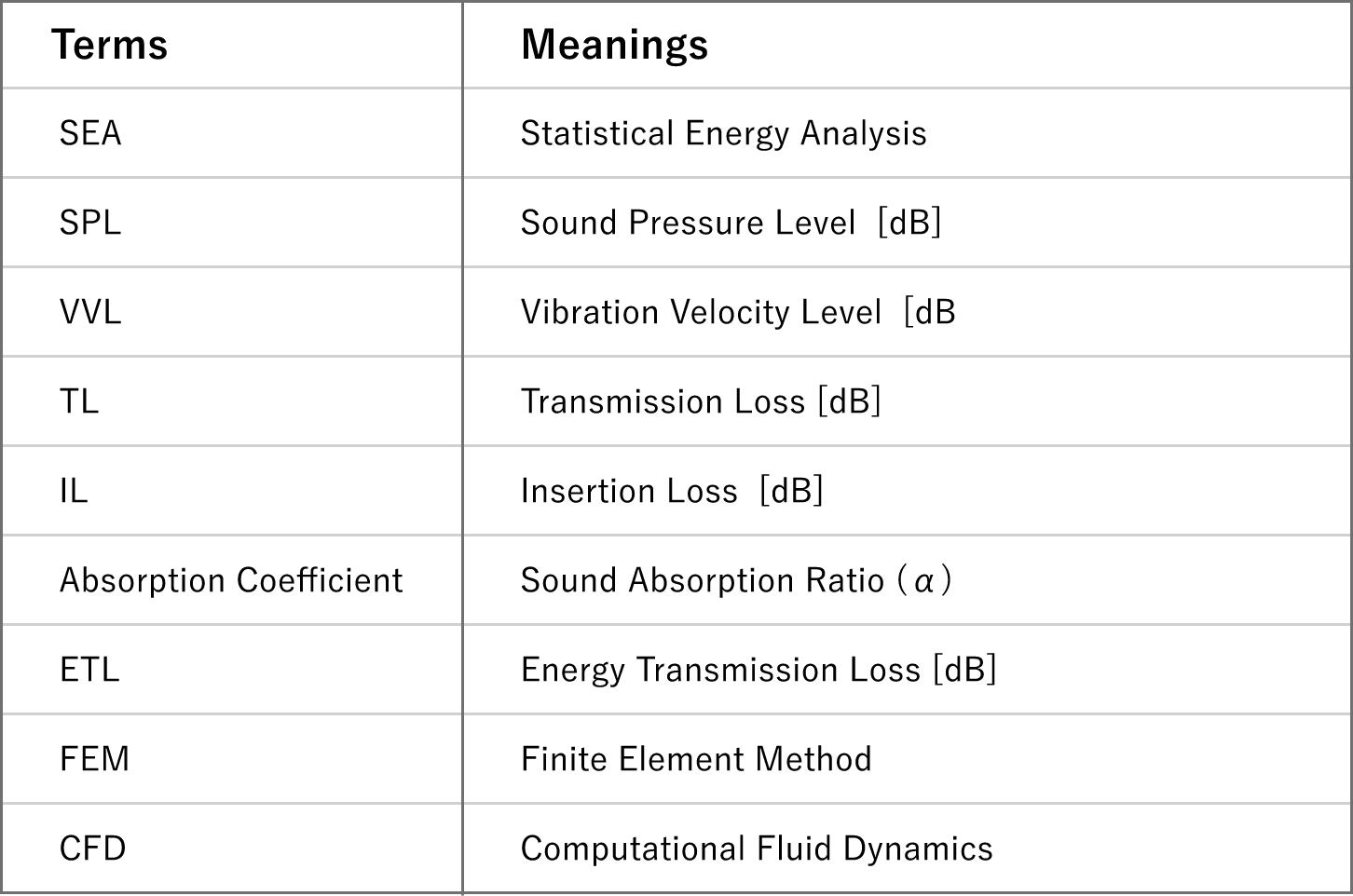HSEA
TUTORIAL
SEA (Statistical Energy Analysis)
Case1: In the case of one cavity
Let ωηt (ω:angular velocity, ηt:Total Damping Loss Factor (TDLF)be the power disappears in cavity of energy (E). If the power emitted from the speaker is Ⅱ, the power balance equation can be written as below:

If Ⅱ and ηt are known, the energy (E) of the cavity can be calculated.
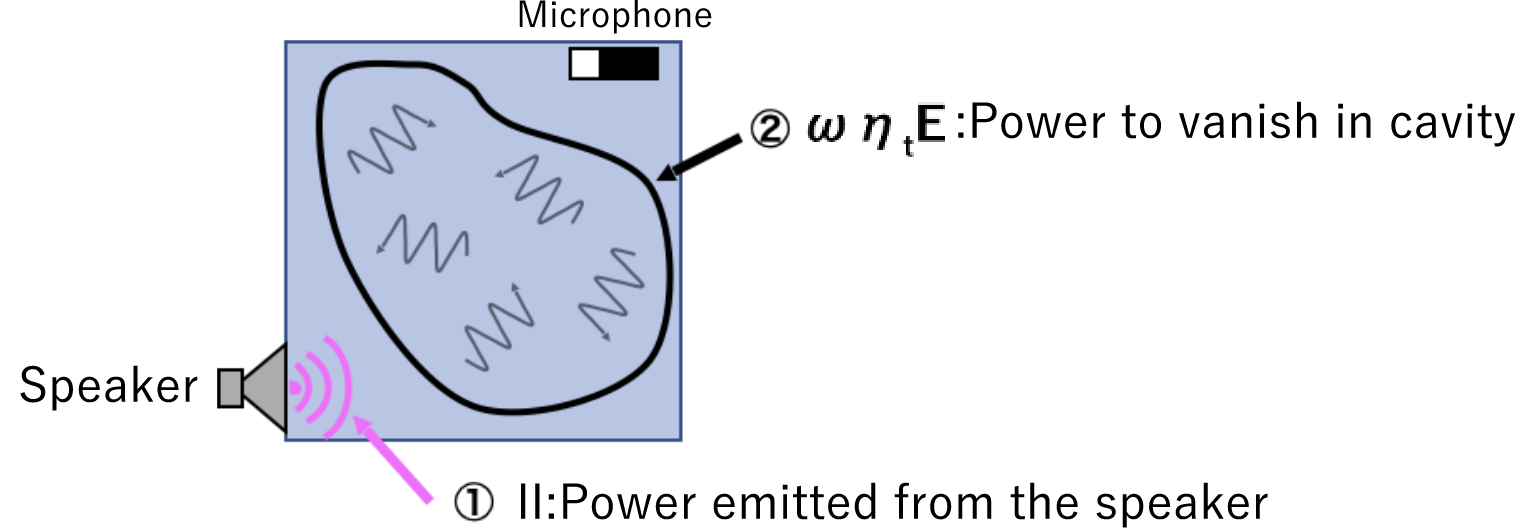
Case2: In the case of two cavities
Let the power flowing from cavity 1 to cavity 2 and from cavity 2 to cavity 1 be ωη12E1 and ωη21E2 (η12: Coupling Loss Factor (CLF), E1 and E2: energy of cavity 1 and 2) . Also, let ωηt, 1E1, ωηt,2E2 (ηt,1,ηt,2: TDLF of cavity 1 and 2) be the power lost in cavities 1 and 2. If cavity 1 is excited by a speaker (power Ⅱ), the power balance formula can be written as below:

If Ⅱ, ηt,1,ηt,2,ηt,12,ηt,21 are known, the energies (E1,E2) of cavities 1 and 2 can be calculated.
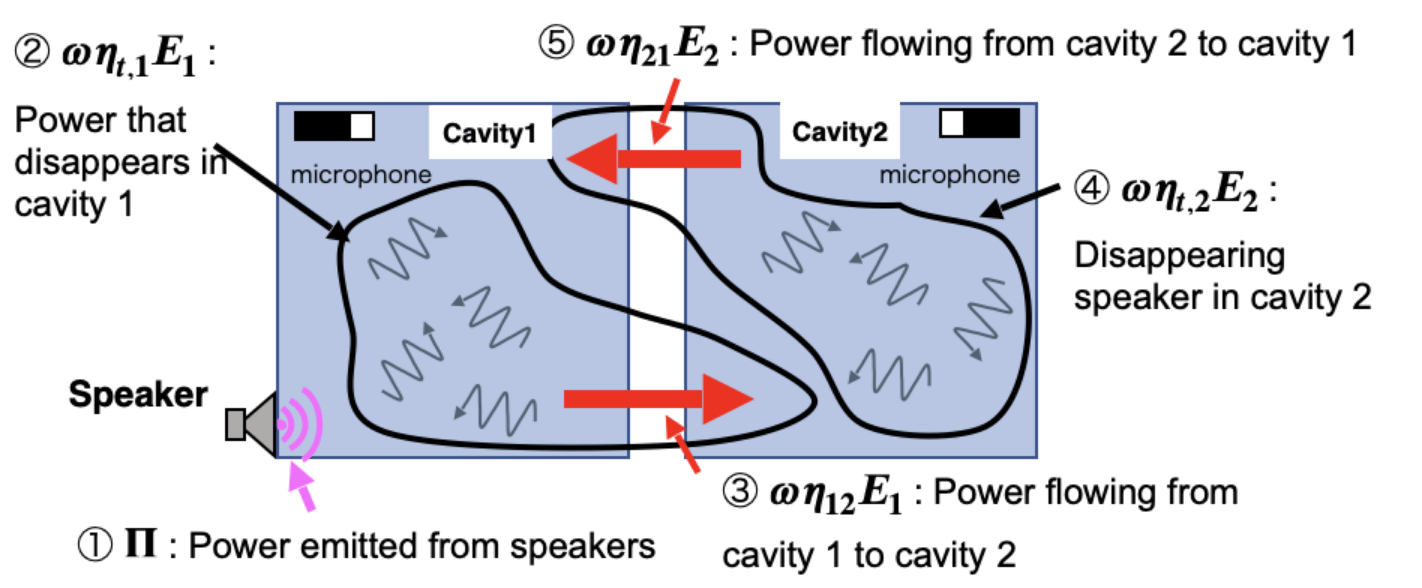
Case3: In the case of three cavities
Even if three cavities are connected, it can be considered in the same way as Case 2. When cavity 1 is excited by a speaker (power Ⅱ), the power balance equation for each cavity can be written as follows.

If it is expressed as a matrix, it will be as below.
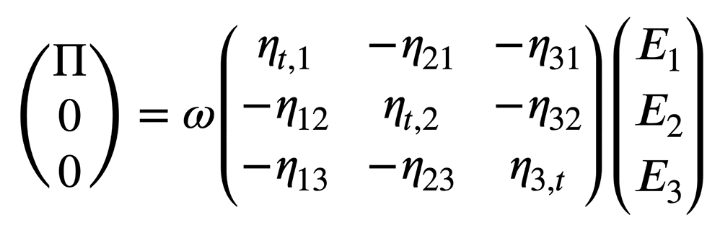
If the TDLF, CLF, and speaker power Ⅱ for each cavity are known, the energies (E1, E2, E3) for spaces 1, 2, and 3 can be calculated.
Using the matrix form, the calculation can be performed even if there are an infinite number of subsystems (the smallest areas in SEA: cavity or panel).
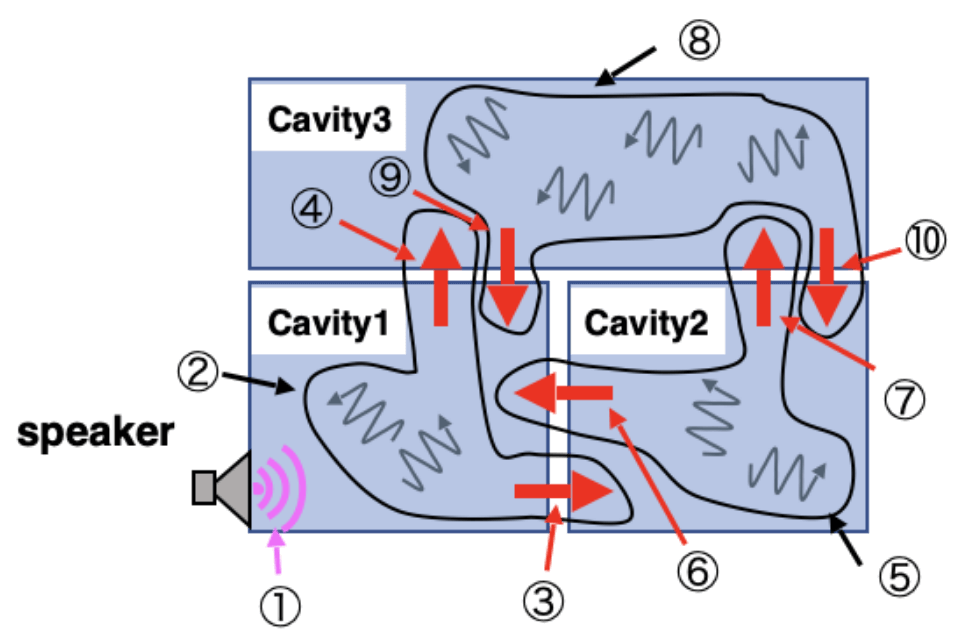

Glossary
